Chrysocolla is among the most sought-after stones found in the United States. This stone is far more than a cheaper “near-turquoise” compound, it’s a fantastic gemstone with a wide variety of differences. The trouble is knowing where to find it and how to make heads or tails of what you find.
So, let’s dig into the heart of the matter with our guide to chrysocolla!
What is Chrysocolla?
Chrysocolla is a blue-ish stone with a wide range of hardness.. Most varieties bear striking resemblance to powder blue turquoise, and its often used by traditional silversmiths in its place. It’s not quite as rare or valuable as turquoise, but it’s not a cheap stone by any means.
Chrysocolla appears to be a combination of chalcedony and a copper-bearing mineral known as spertiniite. This information is recent, after the turn of the millennium, as it was previously considered a mineral in its own right.
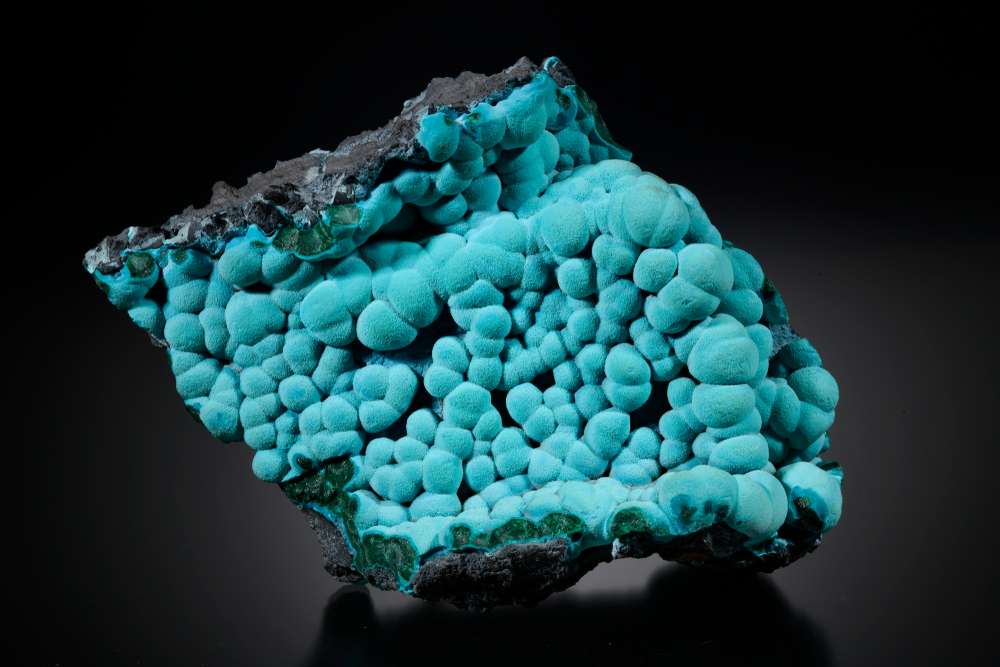
Chrysocolla, as a name, actually derives from ancient Greek goldsmithing terms. Roughly translated the name means “gold glue” or “gold solder.” Ancient “chrysocolla” has been reputed to be a variety of things, but the name most likely derives from the similar appearance of azurite and malachite in copper veins.
These minerals can be heated, producing carbon dioxide gas and copper. The copper is what makes up the “gold glue” that gives the stone its name. The other possible explanation for the original “chrysocolla” is borax, which has been used as flux for most of human history.
Chrysocolla varies widely in grade, but it usually occurs in a secondary oxidation zone around areas that have a lot of copper-rich ore.
Chrysocolla’s grade is more easily told through color than that of turquoise. While “pure” chrysocolla is a bit of a misnomer due to its discovered multi-compound structure, Grade A material is usually similar in color to turquoise and runs about a 5 on the Moh’s scale. Most samples run from 3.5 to 5.5 or so.
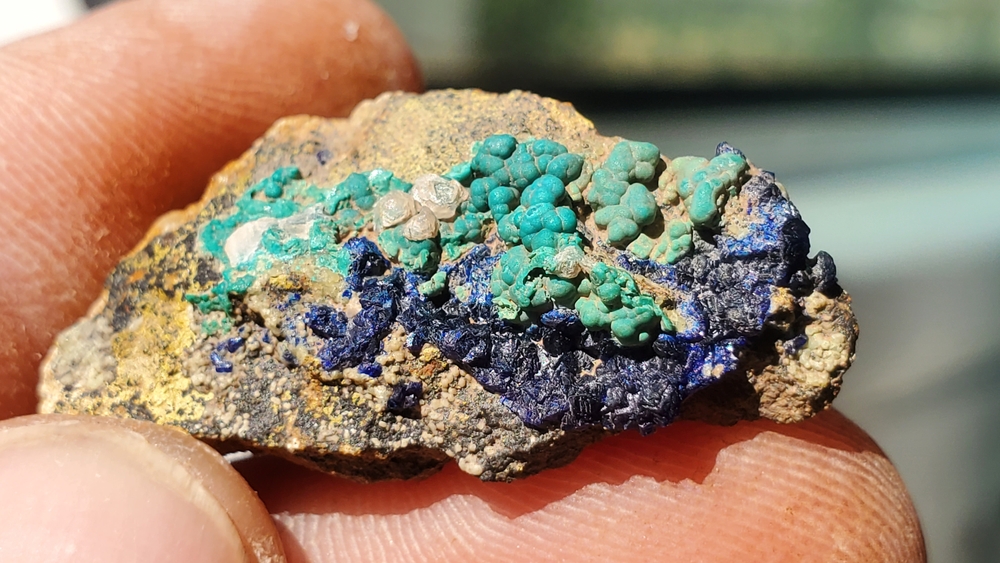
Lower-quality specimens are often a deeper blue than we normally associate with this mineral. “Chalk” material of chrysocolla is often a deep blue that borders on blackish or navy blue.
The best samples, however, are among the most expensive stones out there. These are known as gem silica or chrysocolla chalcedony. This stone has a unique, vivid blue hue and a hardness of 7 on Moh’s scale. Gem silica is very rare, very expensive, and quite beautiful.
The majority of chrysocolla co-occurs with a variety of other copper ores. It can co-occur with malachite, azurite, and even turquoise itself. The entire group of minerals (copper ores) is a mess if you look too closely, especially due to their similar compositions and tendency to mix together.
Eilat stone, one of these admixtures, is known only in Israel and has special significance in the region.
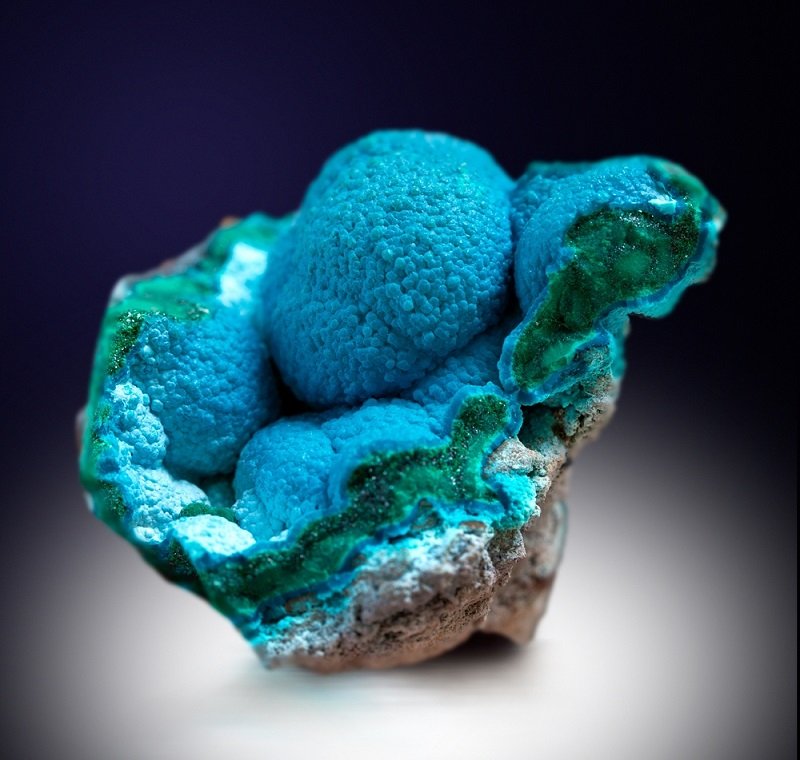
Overall, chrysocolla is a secondary ore of copper that’s navy blue to turquoise in color with a wide range of different grades and admixtures.
Chrysocolla nodules often occur as botryoidal specimens or are found in filled in seams and pockets in the host rock.
Where To Find Chrysocolla
Chrysocolla can be found in many places across the world, including in the United States. It shows up in the majority of Western states. The heaviest concentrations can be found in the following states:
- California
- New Mexico
- Arizona
- Colorado
- Oregon
- Washington
- Montana
- New York
Smaller concentrations are found in many places. Like most copper-bearing minerals… Chrysocolla gets around. It’s a feature of the majority of copper mines, which are a common sight in the United States.
Quality varies quite a bit depending on the location, but you’re kind of in a bind if all you’re interested in is gem silica. The ultra high-grade chrysocolla is found in very small quantities and relentlessly chased when found due to the high price.
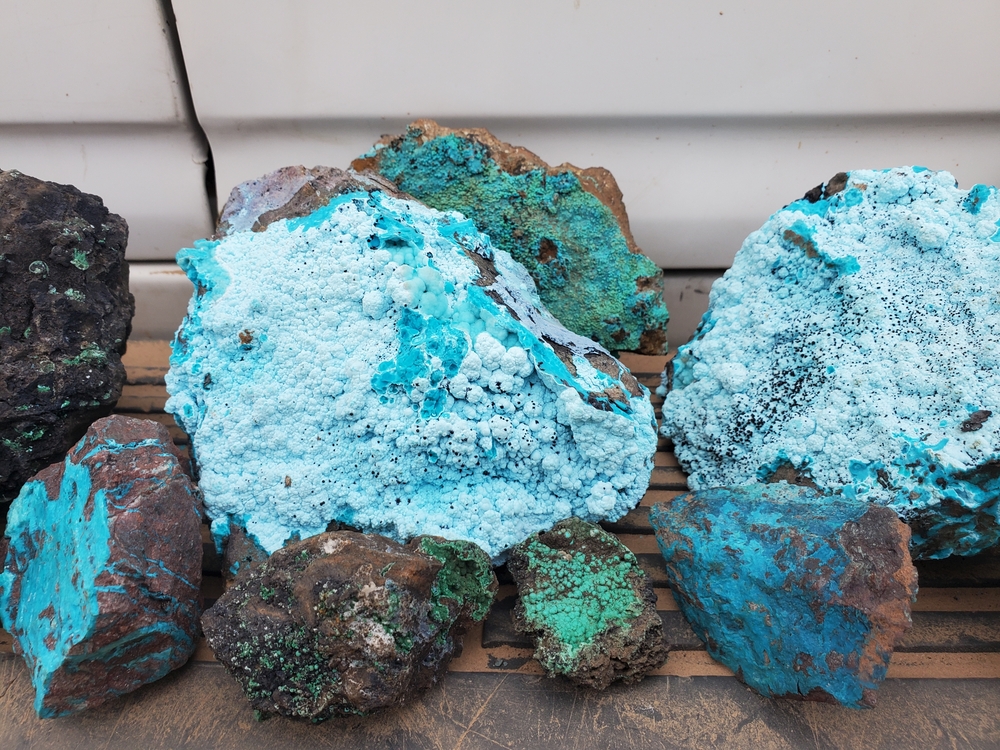
On the other hand, there’s usually a location nearby to check out if you don’t live in the dead center of the United States or in the Dakotas. Locations are numerous and even within the same location, you’ll be looking at a wide variety of different grades of chrysocolla.
Your best bet, rather than seeking out specific fields, is just to see what’s near you. Mindat has a great database showing the widespread locations where it can be found.
You’ll need to research locations individually. Not all of them are public. Some of those that are public, are also deposits around old copper mines. Being around older pit mines isn’t overly dangerous, but other types of mine can make terrain in the surrounding area extremely hazardous.
So be safe when you’re looking for the stuff, and make sure that you’re not in a spot that’s on private property where you don’t have permission to dig.
Historically, the best quality Chrysocolla came from the old Inspiration Mine, near the town of Inspiration. Inspiration is now a literal ghost town, but the mine persisted until recently in the Miami-Inspiration deposit.
Good quality chrysocolla can often be found around this area, but you’ll need to do some checking on legality, land ownership, and safety if you intend to hunt in this area. It may be your best bet for finding great material, simply due to the historic presence of considerable amounts of gem silica in addition to the copper deposits the mine was made for.
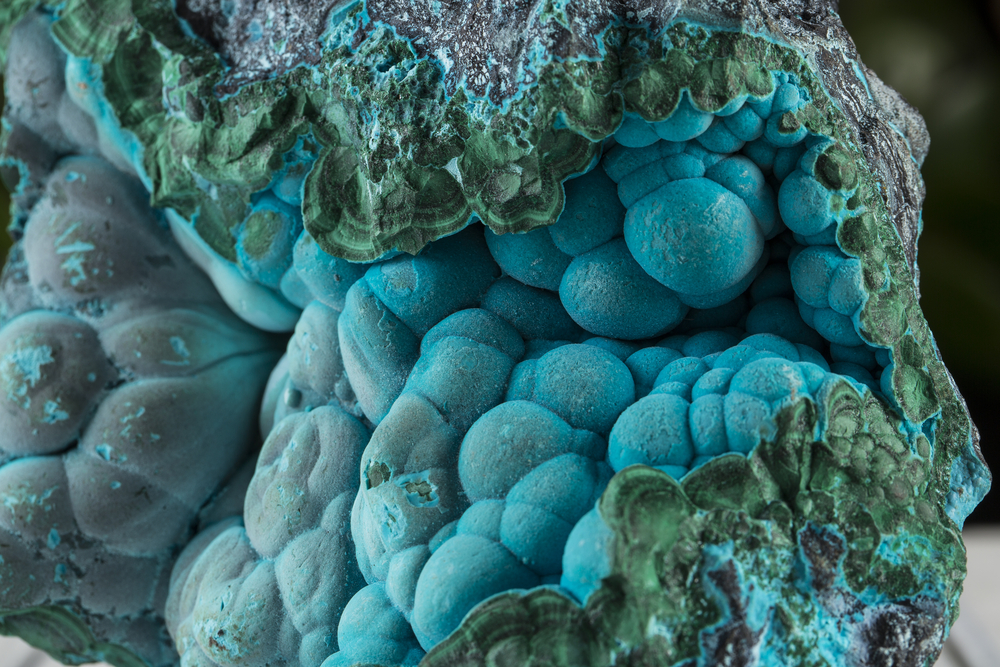
Is There Fake Chrysocolla?
Chrysocolla is treated in similar ways to turquoise. Namely, stabilized specimens are easy to find and not always labeled as such. That said, it’s far more likely to see mid-grade chrysocolla being used as a fake than to find it faked.
After all, it’s similar to turquoise in color and composition… while turquoise commands a higher price in the majority of cases.
A heated pin test (for resin/epoxy) and a hardness test are your best bet if you think you don’t have the right material.
Most Chrysocolla has oxidized iron in it that forms black lines. While some turquoise specimens have black veining, it’s much rarer and often the best sign that chrysocolla is being passed as turquoise.
Chrysocolla is much softer as well unless we’re talking about gem silica. There’s almost no chance of chrysocolla chalcedony being passed off as turquoise, the value is too much higher. Only gem silica will approach a 7 on Moh’s scale without alteration of the stone.
The biggest problem for a lapidary is finding good material. Fortunately, it can be stabilized in the same manner as turquoise which renders it hard enough to cut and take a good polish.
- Online rock and mineral club for collectors of all levels!
- Find community with like-minded rock and mineral enthusiasts.
- Monthly Giveaways!
- Free Access to Entire Digital Library of Products (current and future products)*


